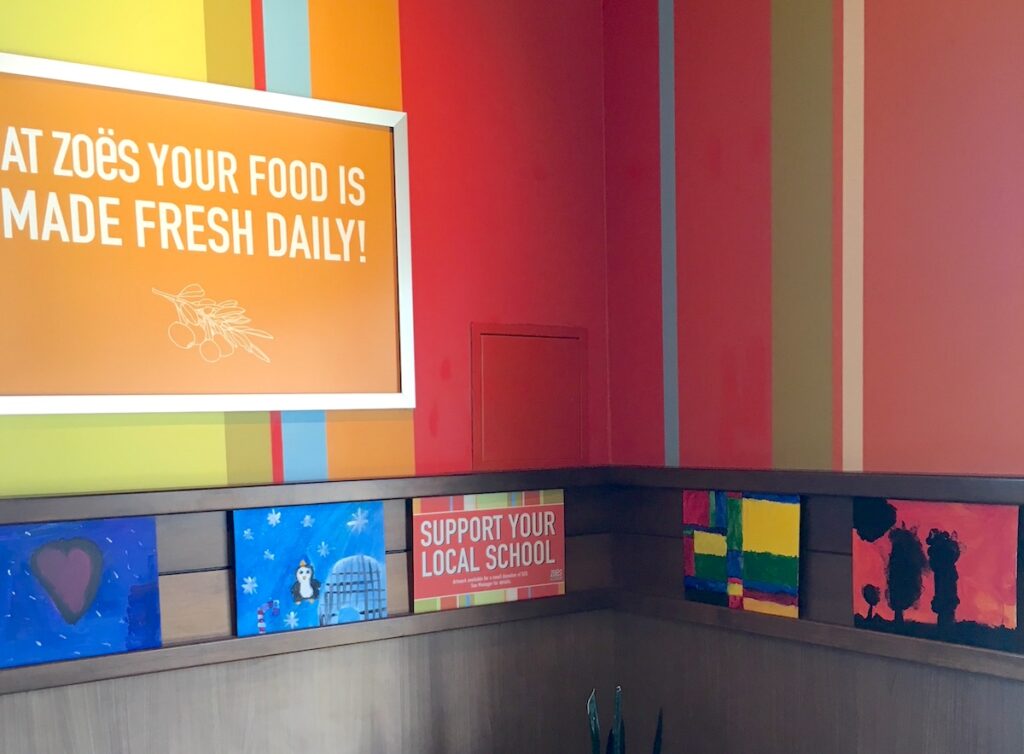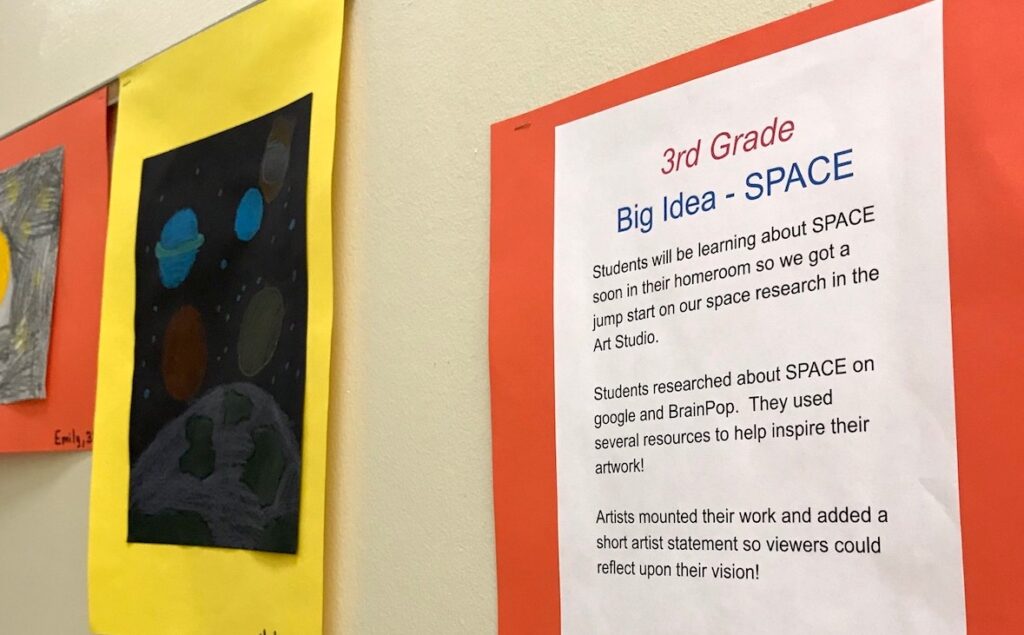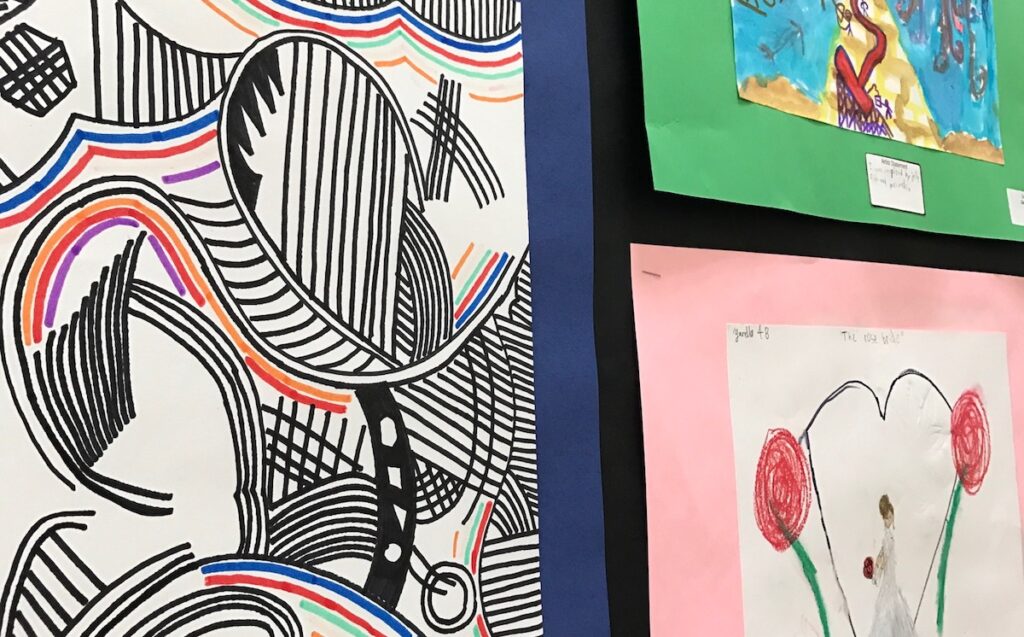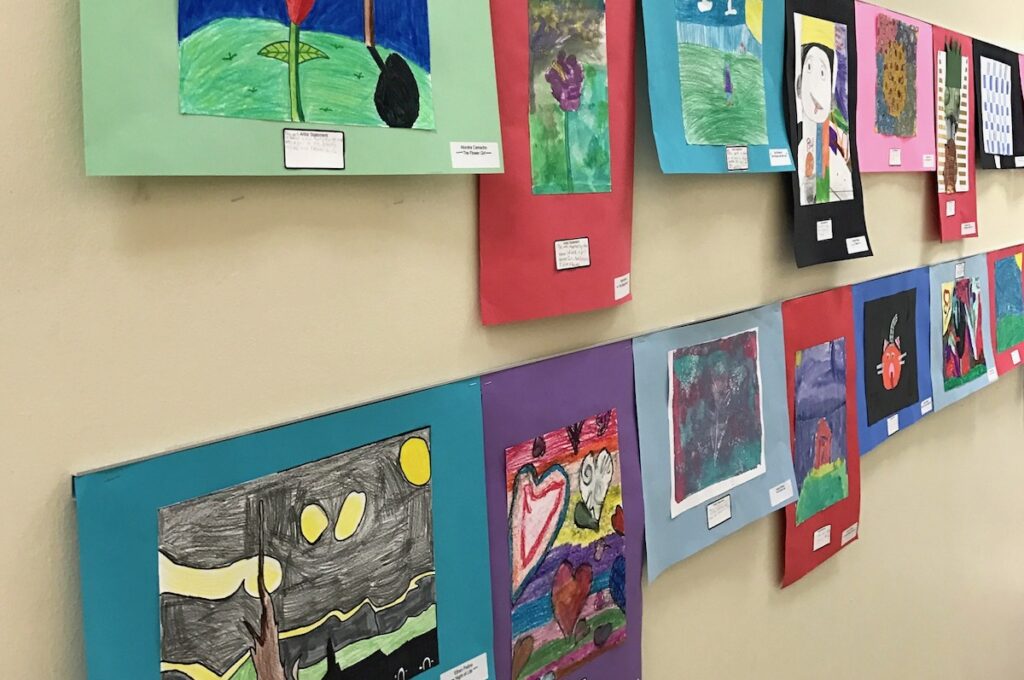As art teachers, we all understand the importance of the arts. We appreciate that the arts allow our students to express themselves, to gain an appreciation for the wider world, to think outside the box, and to communicate in new ways.
However, we also know not everyone thinks the way we do. So it’s vital for us to make our school leaders, school board members, legislators, and community members aware of the benefits of an arts education. And not just in relation to bringing up the scores of other subjects. We must make people see art for art’s sake is also important. Art truly benefits the whole child, and it should be accessible to all.
If you’re looking for advocacy ideas, check out the list below!
Here are four ways you can advocate for the arts.
1. Get art into your local community.
Sharing your students’ work is a great way to highlight the role art plays in your students’ lives. An art display helps stakeholders visualize what you are doing and the impact it has on students. It helps them directly see the type of work and thinking they’re supporting. Adding a brief write-up of what the students are learning as well as a few process photographs to your display will give viewers a more holistic understanding of arts education.
Arlene Shelton, an 8th and 9th-grade secondary art teacher in Aledo, TX, told me she advocates for the arts in many ways including displaying work on her campus, in her district, in her community, and on social media. I loved when she said, “The results of a solid arts advocacy program in a school district include increased student pride, a deeper understanding of the powerful impact arts education has on students and communities, and ultimately, the increased value of the creative process for our students.”
Personally, I had a cool opportunity to partner with a local restaurant. The restaurant provided a canvas, paint, and brushes. After students created work, the work was displayed in the restaurant and put up for sale.

Once the painting was purchased, my school received the proceeds. Check around in your community to see what partnerships might be available! Hospitals, coffee shops, and local businesses are all great places to check out! Don’t forget to have a chat with your admin or PTA before you begin to make clear you’d like the proceeds to directly benefit your art program.
2. Highlight your students’ art within the school.
Displaying student work within your school and hosting art shows are great ways to advocate for your art program on campus. When you host events, don’t forget to invite the local media and your school district’s communication department. Or, write up a blurb and submit it yourself!
Highlighting student work not only lets your coworkers and parents see what your students are making, but it gives your students a chance to shine! Taking every opportunity to get your students’ work out there is a great way to show the validity of your art program. Don’t forget to write up a description of the projects, including the standards, vocabulary, and techniques students learned. These signs will help educate viewers.

Erin Rowe, an elementary art teacher from Plano, TX, not only suggests displaying art within the school but also says you should take art outside of the school walls through channels such as school newsletters, social media pages, and digital portfolios. She told me, “It is important to advocate for your art program to let parents, teachers, and the school community know what type of art is being made, that the kiln is being fired up, and what materials may be needed for donations.”
3. Be aware of legislative policies.
The legislature makes many decisions that revolve around education and may greatly impact support for art education. While No Child Left Behind contained language about art being a core subject, the Every Student Succeeds Act, passed in 2015, has named art and music as topics beneficial to a “well-rounded education.”
This language has allowed the state and local legislatures to make decisions on new funding opportunities for the arts. The Every Student Succeeds Act is written in a way that makes it possible for Title 1 funds to be used for art education. Title I schools are in great need of arts education for their students, and this is a great way to ensure funding for their art programs.

Art is also eligible to get funds under the Student Support and Academic Enrichment Grants and the 21st Century Community Learning Center Funding when applied for by state government agencies. While many may not know about these funding opportunities, it is one important reason to stay in the know when it comes to legislative policies and why, as citizens and art teachers, we need to stay informed.
Clyde Gaw, a high school art teacher in New Palestine, Indiana, agrees that funding for the arts is essential. I loved when he told me, “Providing the very best learning conditions so children’s cognitive capacities can be expanded through multi-sensory, hands-on learning experiences, and providing opportunities for democratic education through artistic self-expression are the two most important reasons to advocate for the visual arts.”
4. Reach out to your representatives and stakeholders.
Making your voice heard is imperative to advocate for the arts. Reaching out to your local city and state officials about the importance of art in schools is a great way to start. To do this, check out The United States House of Representatives website to locate your local and state officials. Click the representative you would like to get in touch with to get his or her contact information.
Writing an email is a good start, but making a phone call is even better. Let your representatives know where you stand when it comes to your views and supporting the arts. If your district is low on funding for the arts, check with them to see if your state government agencies have applied for the funding eligible under the Every Student Succeeds Act. Don’t forget to encourage your peers to reach out as well. There is power in numbers!

If you’re looking for some talking points, Clyde Gaw shared some thoughts on his blog in a post titled, “What Do Children’s Art Classes in School Have to Do with Civic Engagement and Voter Turnout,” that would work well. One of my favorite parts said, “The art classroom is that place in school where children develop a critical eye, a critical mind, where visual literacy is emphasized, and where the refinement of the imagination is practiced daily. We need more art education in our schools, not less. I ask you to please stay informed. Remain active as a citizen advocate. Your voice to elected officials is essential to protect those educational programs that make our schools special.”
Here are five more resources to help empower you to learn more about advocating for the arts:
- Legislative Updates on Every Student Succeeds Act
- Encouraging Schools to Use Funds for the Arts
- 10 Awesome Art Advocacy Resources for Art Education
- News section from the National Art Education Association
- ESSA & Arts Education: 7 Basics to Know
How do you advocate for the arts?
Why do you believe it is important to be an art advocate?
Magazine articles and podcasts are opinions of professional education contributors and do not necessarily represent the position of the Art of Education University (AOEU) or its academic offerings. Contributors use terms in the way they are most often talked about in the scope of their educational experiences.





